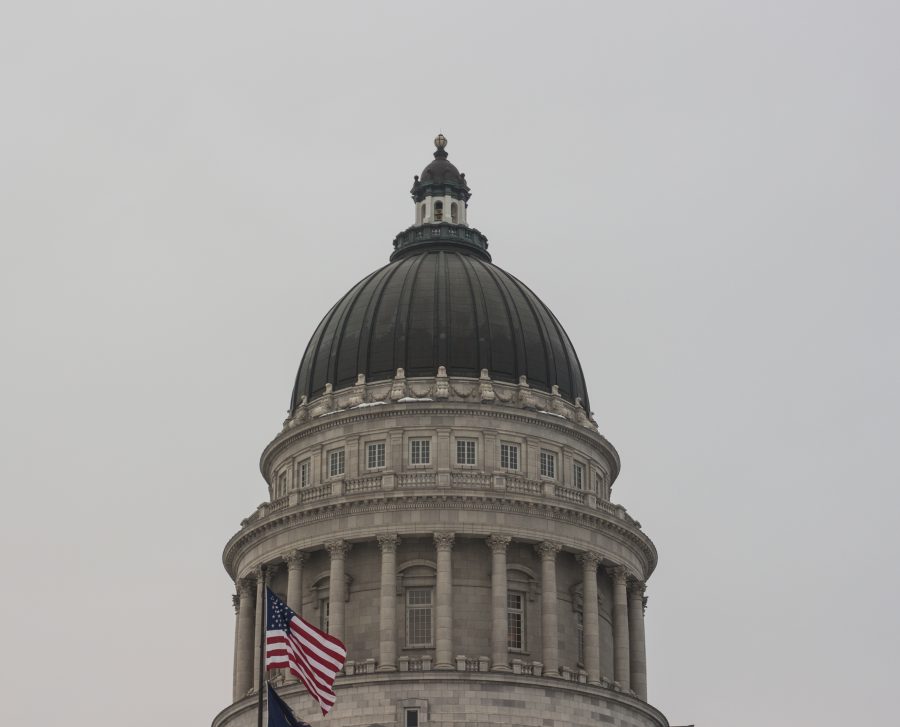In 1974, the Utah State Legislature passed S.B. 25, authorizing the establishment of port authorities — special districts to facilitate commerce — in any municipality. This was done with the hopes of growing and diversifying the state’s economy. More than 40 years later, during the final evening of the 2018 legislative session, the state legislature exercised the power given by S.B. 25 to pass S.B. 234. This established the Utah Inland Port Authority as an inland logistics and distribution hub to process cargo from West Coast seaports.
Due to the eleventh-hour nature of S.B. 234, the inland port has been a topic of strong debate between state representatives and Salt Lake City officials. Yet, the inland port project appears relatively unimportant in the public discussion of everyday Utahns. They have been preoccupied with other centerstage issues like the legalization of medical marijuana and the barring of conversion therapy for LGBTQ children.
University of Utah students cannot afford to ignore the “uninteresting” inland port because it will have an impact on Utah’s economy and communities. The passage of this highly technical, seemingly mundane bill dedicates almost 20,000 acres of land in the northwest quadrant of the Salt Lake Valley to an ambitious development. It could lead to an economic boom, an environmental crisis or more likely both.
An August of 2016 research brief compiled by the Kem C. Gardner Policy Institute detailed the economic feasibility and impact of the development of an inland port in the Salt Lake area. Salt Lake City appeared an ideal location for the creation of a new inland port, which would then bring more jobs to the state. This is the backbone of many of the inland port supporters’ arguments for the development. Port support is understandable — economic growth is appealing, especially to students who are looking for internship and co-op opportunities during school and permanent jobs post-graduation.
However, the significant environmental concerns raised by Salt Lake City officials and residents about the inland port have been brushed off by port supporters. The port would likely cause further degradation of the Salt Lake Valley’s air quality and the destruction of the Great Salt Lake habitat. These issues are not expressly covered in the Gardner Brief. In fact, the brief stated that “the environmental impact of a proposed inland port deserves in-depth research and analysis.”
The impact the inland port could have on the health of the people living in the Salt Lake Valley is extremely worrisome. Several areas in Utah already struggle to adhere to federal air quality regulations. Smog in Utah has been linked to serious health issues including lung cancer, miscarriages and birth defects. Many residents have left Utah just to protect their health. Without an effective pollution control plan in place, the increased trucking and air traffic guaranteed by an inland port will only worsen the current smog.
The port would also likely damage nearby wetlands. Heather Dove, president of Great Salt Lake Audubon, spoke about potential effects at a recent gathering of 200 concerned Utah residents. Dove said the development of the inland port could devastate the population of birds native to the area. “Birds will lose their home … Noise will disturb the integrity of these natural habitats. Light pollution disrupts natural navigation aids,” said Dove. “It can cause so much confusion that birds drop from exhaustion.” The loss of even a single species will have detrimental ramifications for the Great Salt Lake’s fragile ecosystem.
At this month’s Inland Port Authority Board meeting, oil and gas lobbyist Jeff Hartly purported that the Utah Inland Port is a good economic idea. The protestors attending — and arrested at — the same meeting fear environmental Armageddon — not only for the creatures of the Great Salt Lake, but for the inhabitants of the entire valley. Due to S.B. 25 the development of the inland port is likely inevitable, but awareness and involvement can still have an impact on the “preferred vision for the [port] … moving forward.”
The public has been invited to attend the Utah Inland Port board meetings to share their concerns about development. They may also participate in a survey, which will define priorities for the port. This invitation provides a platform to advocate for economic growth tempered with environmental consciousness. Utah’s Inland Port may not make for interesting party conversation, but it is something students should to be talking about.
Students are the upcoming generation of Utahns. This decision will affect the futures of students who settle down in Utah — their economy, environment and air quality will be changed. For those who wish to start families, the affect of pollution on pregnant women and young children requires serious consideration. Those who will be settled with the consequences of this development need to have an active voice in the early discussion.



